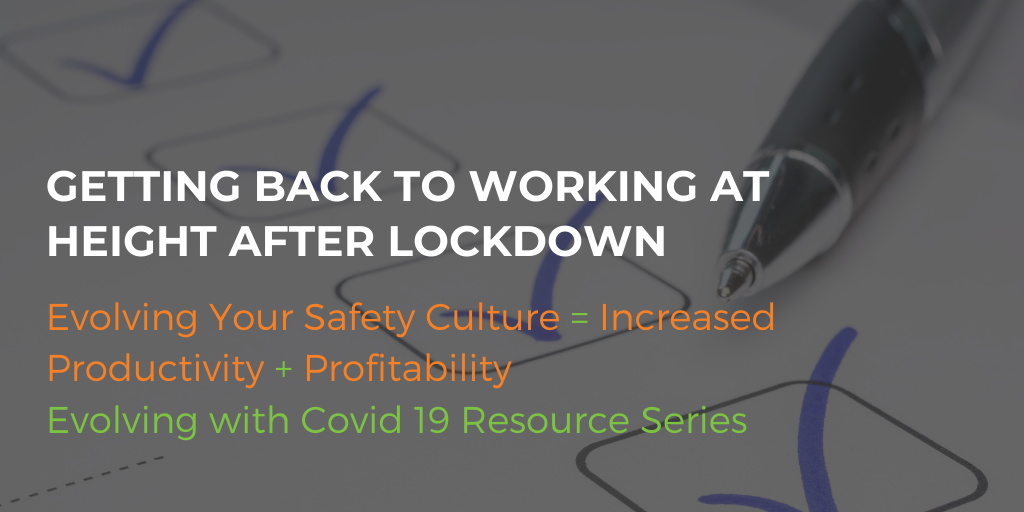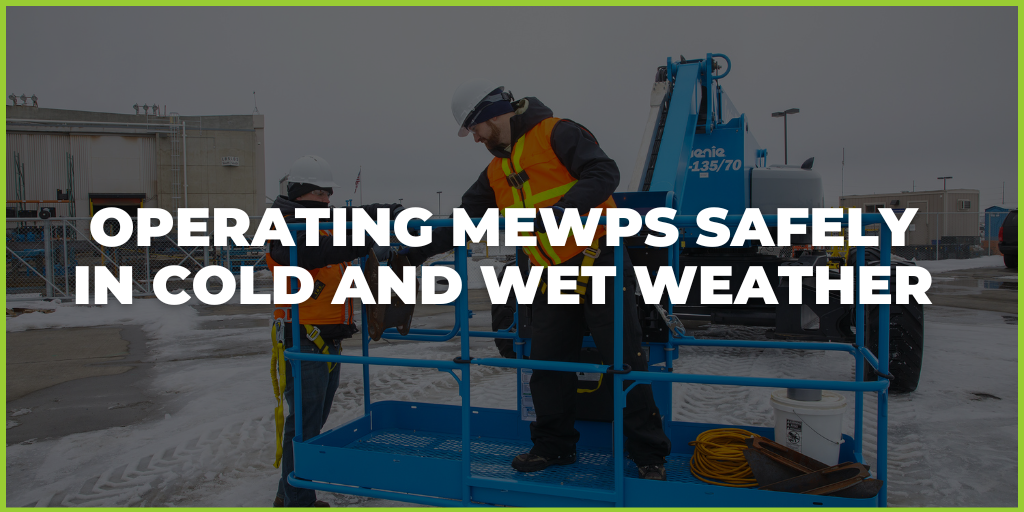Many businesses and organisations across the UK are getting ready to open offices, factories, warehouses, shopping centres and museums. There’s hopefully not long left to go before the latest national lockdown restrictions are lifted. So as we come down through the tiers and start thinking about getting back to working at height after lockdown, what should we consider?
To help your planning efforts, we’ve compiled this handy checklist guide. It’s organised into sections so you can easily tick off key focus areas as you go.
Preparations of the building/site
- Read our blog on COVID-19: Planning and readiness to return to work for business and organisations whose employees are involved in working at height
- Determine your risk level through a COVID-19 assessment and be sure to include staff, clients, customers and contractors in your considerations. Here is our blog on how to create a risk assessment and a risk assessment template from HSE to get you started.
- Deep clean the premises and all work areas.
- Deep clean all MEWPs and work at height equipment, read IPAF’s safe operating guidance for MEWPs.
- Identify any materials or machinery affected by lack of maintenance during the lockdown and create a plan for servicing.
- Ensure that equipment is safe for use, maintained and in a safe condition in accordance with LOLER and PUWER.and Download our MEWP daily checklist.
- Define your regular cleaning and safety protocol.
- Determine if on-site COVID-19 testing is required.
Advising employees and visitors
- Advise all staff/visitors of COVID-secure measures with posted materials.
- Determine who will return to work and when/in what order.
- Plan procedural allowances for vulnerable persons and family members/ carers of vulnerable people.
- Make sure employees are managing the obligations and plan for LOLER, PSSR, PUWER and other required equipment examinations.
- Consider if some employees can continue to work from home to ease the pressure on-site.
Preparing for social distancing
- Restrict fact to face meetings in groups of any size wherever possible.
- Ensure the 2-metre distance between persons and workstations.
- Consider if your current work at height equipment is suitable to enable social distancing, read more about social distancing and using ladders.
- Stagger customer and visitor entrances, staff break times and team schedules to prevent overcrowding.
- Use paperless and contactless invoicing, data transfer, collaboration and payment methods where possible.
Limit outside access
- Consider restricting external access to only those required by law.
- Designate visitor areas with enhanced COVID-secure measures and cleaning.
- Install one-way systems, signage and track & trace protocols.
- Put in temporary plexiglass or another shielding between staff and external personnel.
Practice good hygiene
- Educate staff on respiratory, surface and hand hygiene.
- Install anti-bacterial stations with wipes, spray and gel prominently at all entrances/exits, offices, dining areas, visitor touchpoints and restrooms.
- Replace traditional fixtures with low touch or no-touch versions, where possible.
- Eliminated shared workspaces and shared supplies.
- Mandate a clean desk and sanitisation policy while providing the tools to enforce it.
- Ensure any tools and work at height equipment is disinfected after each use. Read IPAF’s safe operating guidance for MEWPS
Offer improved ventilation
- Keep any fresh air systems on and open any (non-fire) doors and windows to allow circulation.
- Avoid fans unless a proper level of ventilation is in place.
- Provide or allow for more layers or fewer layers of staff clothing to account for seasonal changes.
- Air out rooms when not in use.
Hopefully, this checklist will help you prepare, at a glance, to return to working at height after lockdown. A few months back, we prepared another comprehensive guide for returning to working at height after COVID. If you’d like to read more on the topic, part one is available here. If we all work diligently to adhere to government guidelines, we can help reduce the spread and make our return to normalcy that much faster.
Simple precautions, planning and detailed risk assessments can make a big difference. Taking action now to prepare will help protect your employees and your organisation when you are ready to return to work.
Are you struggling to understand the new risks on your site or building? We offer a site survey and risk assessment support service, to help you find the right working at height solution and to help your business adapt to operating safely during coronavirus outbreak.
Please share this information with your colleagues who you feel may find it useful.
**This guidance was correct at time of publishing. We will endeavour to keep this information up to date.






